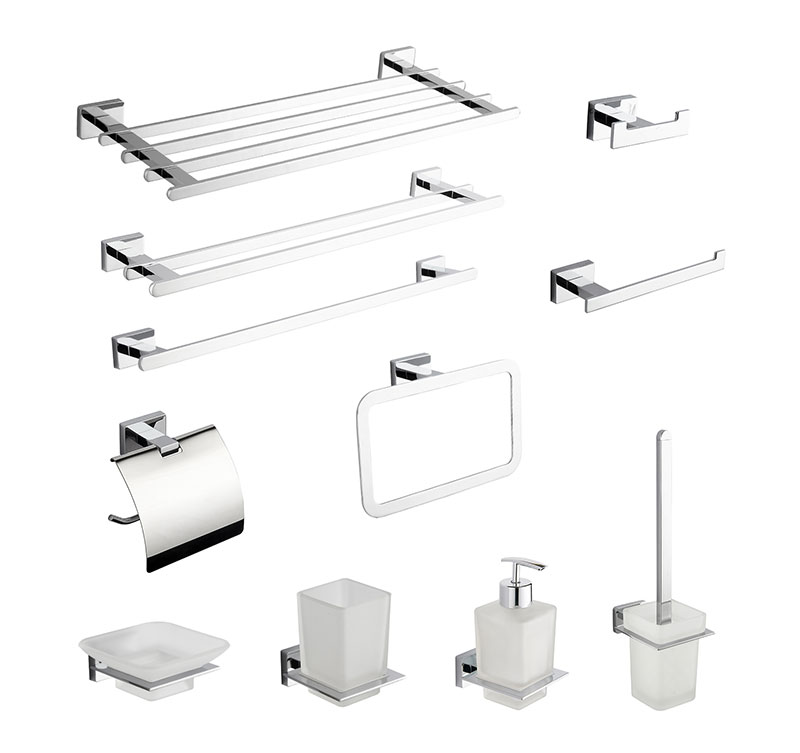What are the advantages and disadvantages of different types of Soap Dispensers?
Common Soap Dispensers include manual, automatic induction and pedal types, each with its own advantages and disadvantages:
1. Manual Soap Dispenser:
Advantages:
Affordable: Usually relatively low in price, with low cost investment, it is a more economical choice for users with limited budgets.
Wide range of applications: The structure and working principle are simple, and the requirements for the use environment and installation conditions are not high. It can be applied to a variety of scenarios such as home and ordinary office places.
Easy to maintain: When a fault occurs, it is easy to troubleshoot and repair due to its simple structure. Moreover, manual Soap Dispensers generally do not have complex electronic components, so there is no need to worry about problems such as damage to electronic components.
Multiple capacity options: There are a variety of capacity specifications to choose from, and you can choose the appropriate capacity according to the frequency of use and the number of people, reducing the trouble of frequent liquid addition.
Disadvantages:
Hygiene hazards: You need to press it with your hands when using it. When your hands are not clean or have bacteria, it is easy to contaminate the pressing part of the Soap Dispenser, which may cause bacteria to spread between users.
Inconvenient to use: Manual operation is required every time it is used. It may be difficult for people with hand injuries, disabilities or mobility difficulties to use it. And if both hands are holding something, you need to put it down before pressing to get the liquid, which is not very convenient.
Easy to damage: After frequent use, the pressing part may have problems such as spring aging and button failure, which will affect the service life.
2. Automatic induction Soap Dispenser:
Advantages:
Hygienic and convenient: Using infrared sensing technology, the liquid can be discharged without touching the Soap Dispenser, avoiding the contamination of the Soap Dispenser by hand bacteria, and also preventing cross infection. It is especially suitable for places with high hygiene requirements such as hospitals and public toilets.
Good user experience: Sensitive induction, fast liquid discharge, automatic liquid discharge by reaching out, very convenient to use, no manual operation required, giving users a good user experience.
Beautiful appearance: The design is usually more fashionable and exquisite, and the appearance is beautiful and generous, which can improve the overall grade and beauty of the place of use.
Disadvantages:
High price: Because it contains more complex components such as electronic components and sensors, the manufacturing cost is high, so the price is relatively expensive.
Energy consumption problem: It needs to be powered by a power supply, generally using batteries or connecting a power adapter. If batteries are used, they need to be replaced regularly, which increases the cost of use; if a power adapter is connected, the location of the power socket needs to be considered during installation, which may be restricted by wiring.
Susceptible to interference: It is easily affected by environmental factors such as light, temperature, humidity, etc., and may cause false induction or insensitive induction.
3. Foot-operated Soap Dispenser:
Advantages:
Hygiene and safety: The liquid is controlled by foot pedaling, and there is no need to touch the Soap Dispenser with your hands, which avoids the spread of hand bacteria and ensures the hygiene of use.
Easy to operate: When using it, you only need to step on it lightly with your feet to discharge the liquid. For people with hand injuries, disabilities or holding things in both hands, it is very convenient to use, and it avoids the action of bending over to take the liquid, reducing the burden on the waist.
Good durability: The structure is relatively simple, there are no complex electronic components, it is not easy to damage, and the service life is long.
Disadvantages:
Inconvenient installation: It usually needs to be installed on the ground or other fixed positions. The installation process is relatively complicated, and it requires drilling or using special installation tools. After installation, the position is fixed and not easy to move.
Space occupied: Since it is installed on the ground, it will take up a certain amount of space, which may not be suitable for places with small spaces.
Appearance is not beautiful enough: Compared with manual and automatic induction soap dispensers, the appearance design of foot-operated soap dispensers is relatively simple and may be slightly less beautiful.





